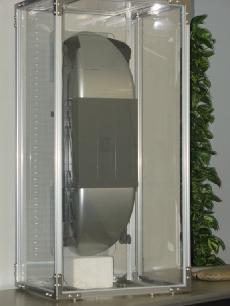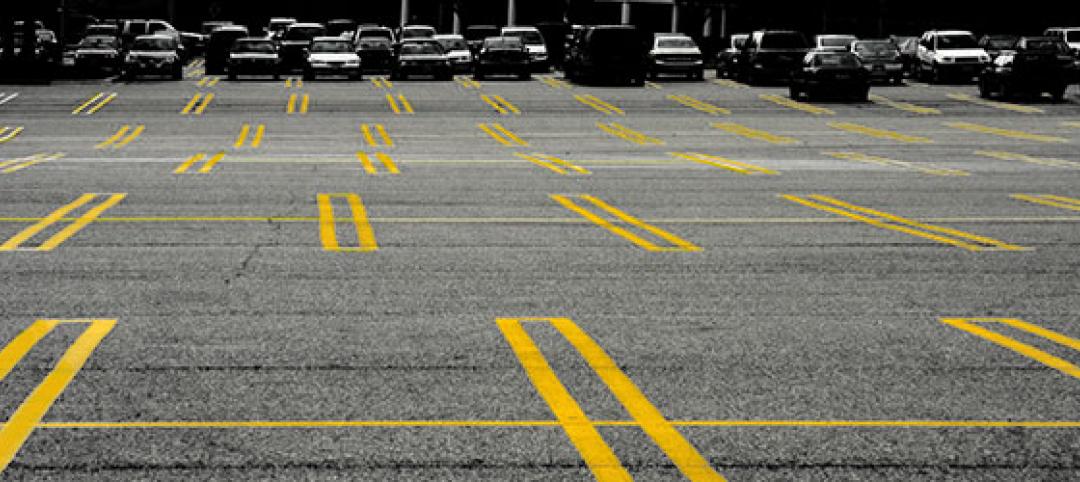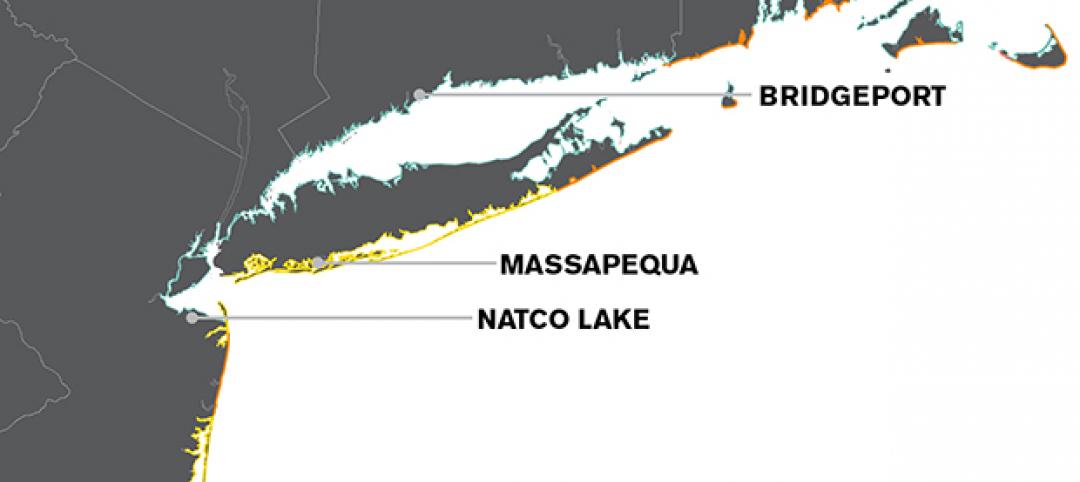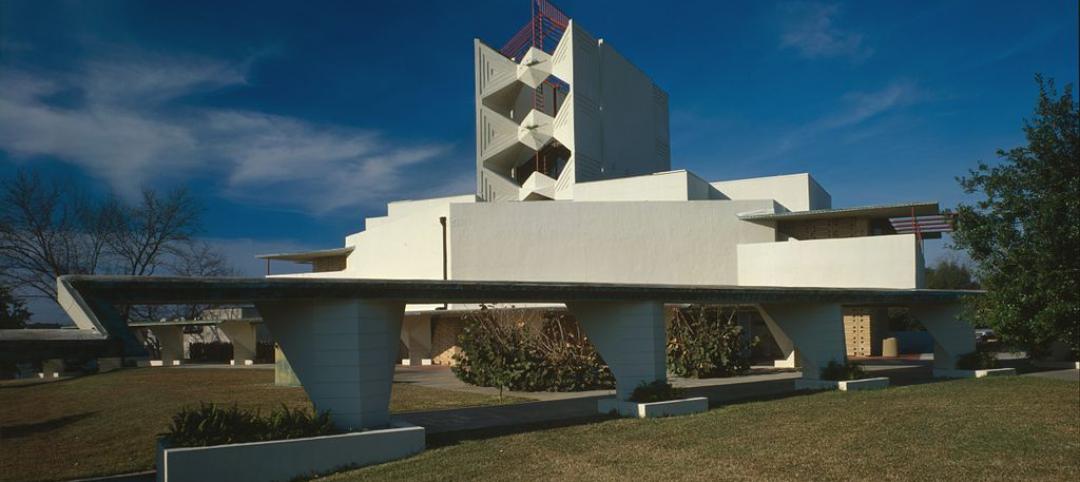Mitsubishi Electric Corp announced the overview of its ultra-high-speed elevator developed for the 632-meter Shanghai Tower under construction in Shanghai, China.
For the traction motor of the elevator, Mitsubishi Electric employed a parallel drive system that uses two three-phase winding coils for each motor and controls the two three-phases with two control panels. By using two compact control panels, the company enabled to design the layout of a machinery room more freely while increasing output power. The operation of the elevator is scheduled to begin in 2014.
To realize the world's fastest speed of 1,080 m per minute, Mitsubishi Electric used new technologies for higher safety, lifting height and comfort as well as for the motor for the winch. Specifically, to enhance safety, the company employed a two-tiered brake (the company's former product has a one-tiered brake) for emergency stop and used fine ceramic with a heat resistance of up to about 1,000°C for the brake shoe.
The buffer (shock absorber) at the bottom of the elevator shaft is comprised of three tiers (the former product has a one-tiered butter) and has a stroke of 7.3 meters, which is about 30% shorter than the stroke of the former product's buffer.
For the "sfleX-rope," a rope for the winch, Mitsubishi Electric employed a new structure so that it can hold a greater weight of a longer rope. The company improved the density of the rope by using a concentric-layered steel wire and filled the gap between the layers with plastic.
As a result, the company increased breaking load by 85% while increasing mass per unit length only by 18%. The new rope is less extensible. So, when people get in the elevator, it does not shake vertically much.
This time, Mitsubishi Electric newly developed a control cable that is 20% lighter than the one used for the former product.
For the comfort, the new elevator is equipped with the "active roller guide," which detects vibration and applies anti-phase vibration to it so that the vibration of the car is reduced. While two units of the active roller guide are installed in the bottom of the former product, Mitsubishi Electric added two more to the upper side of the new elevator because a different type of vibration is applied to the new product when it is moving at an ultra-high speed. As a result, vibration was reduced to about 1/3 that of the former product.
Furthermore, the new elevator is equipped with a streamlined aerodynamic car cover that reduces air resistance as well as an air pressure control device consisting of an air blower, a duct and a box for switching between air intake and emission. As a result, rapid changes in atmospheric pressure can be prevented, reducing passengers' feeling of fullness in the ear. BD+C
Related Stories
| Sep 12, 2014
Will on-site parking remain king in the development world?
In spite of the trend away from multi-car residences, not much has changed with regard to parking spot allocations within apartment buildings and other multi-unit residential developments, writes GS&P's Doug Sharp.
| Sep 11, 2014
5 competing designs unveiled for Presidio Parklands in San Francisco
To turn the underdeveloped area by Chrissy Field into new public space, San Francisco's Presidio Trust unveiled the five designs by five teams they invited earlier this year.
| Sep 11, 2014
Cintas invites public to vote for 'America's best restroom'
For the 13th consecutive year, Cintas Corporation is back with its popular America’s Best Restroom Contest. A team of survey editors once again scanned the country for the most creative and clean public restrooms and produced a crop of nominees sure to please.
| Sep 10, 2014
Ranked: Top transit facility sector AEC firms [2014 Giants 300 Report]
Leo A Daly, URS, and Skanska head BD+C's rankings of the largest transit facility sector design and construction firms, based on the 2014 Giants 300 Report.
| Sep 10, 2014
Must See: Shape-shifting architecture that responds to heat
Students in Barcelona have created a composite material using shape memory polymers that can deform and return to their original state when activated by cues like heat, humidity, and light.
| Sep 10, 2014
Lessons for the shore: Bolstering resilience of the built environment
Nearly 32 million people, or 28% of the East Coast's population, live in areas lying within a mile of a shore line. The good news is that municipalities are starting to take action, writes Sasaki Associates.
| Sep 9, 2014
Using Facebook to transform workplace design
As part of our ongoing studies of how building design influences human behavior in today’s social media-driven world, HOK’s workplace strategists had an idea: Leverage the power of social media to collect data about how people feel about their workplaces and the type of spaces they need to succeed.
| Sep 9, 2014
Ranked: Top religious sector AEC firms [2014 Giants 300 Report]
Brasfield & Gorrie, Gensler, and Jacobs top BD+C's rankings of the nation's largest religious sector design and construction firms, as reported in the 2014 Giants 300 Report.
| Sep 9, 2014
Take a look at the hardhat of the future
A Los Angeles-based startup added augmented reality technology to a hardhat, creating a smart helmet.
| Sep 9, 2014
Frank Lloyd Wright's Annie Pfeiffer Chapel brought back to life using 3D printing
Restoration of the Frank Lloyd Wright-designed chapel was made possible (and affordable) thanks to 3D printing.
















